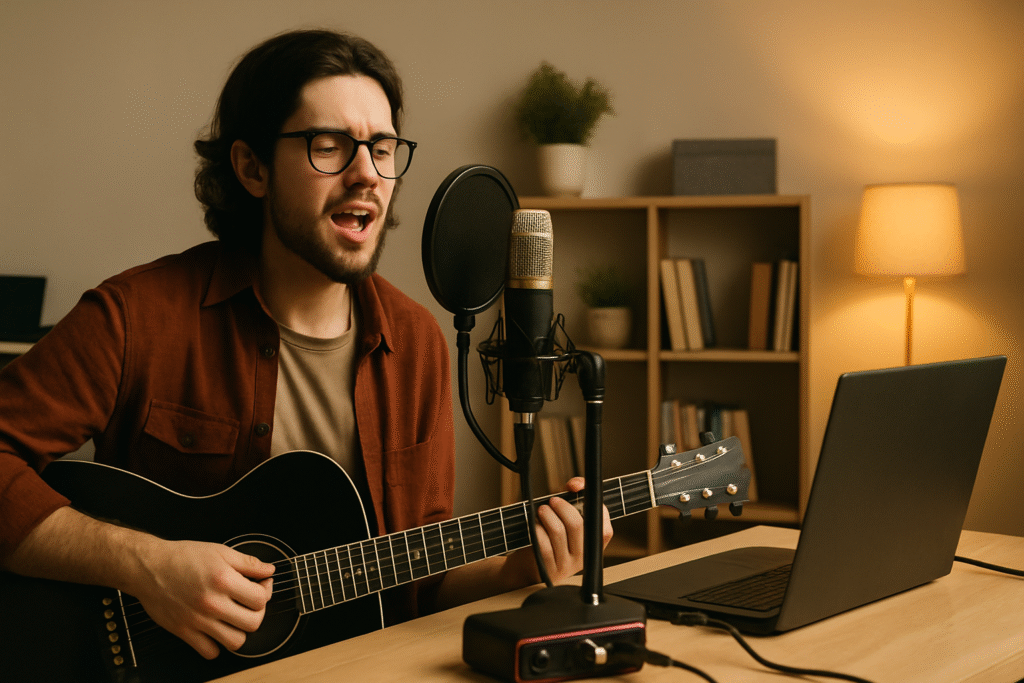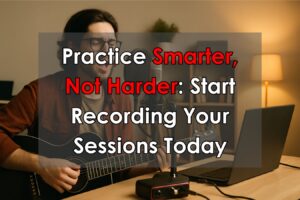You’ve been working hard on your music—nailing that tricky chord change, perfecting your drum fills, polishing your vocals. But how do you really know if you’re improving? The secret weapon most musicians overlook is simple: recording yourself at home.
It might sound intimidating at first, like setting up a tiny studio in your bedroom. But here’s the good news—you don’t need fancy equipment or a professional background to start. In fact, with just a few basic tools, you can start capturing your practice sessions, hearing real progress, and boosting your skills faster than ever before.
When I first started coaching beginner singers and guitarists, one of the biggest “aha” moments came when they heard themselves for the first time. It’s like standing in front of a mirror after a long time—you see (and hear) things you never noticed before. Let’s dive into how you can set up your own simple home recording system and start supercharging your practice today.
Why Recording Your Practice Matters
Imagine trying to fix your posture without ever looking in a mirror. You could spend hours practicing… but without feedback, you’d never know if you were slouching or standing tall. The same idea applies to your music practice.
When you record yourself, you become your own best teacher.
You can hear subtle timing issues you might miss while playing.
You notice where your tone, pitch, or dynamics drift.
You get clear proof of your improvements over time.
One of my beginner guitar students, Ronnie, struggled for months to stay in rhythm with a backing track. He practiced hard, but didn’t realize he was speeding up during the transitions. Once he started recording and listening back, it was like someone turned on a light in a dark room. In just a few weeks, his timing locked in like a drummer playing to a metronome.
Questions to consider:
Are you truly hearing what you sound like when you practice?
Could regular recordings reveal patterns you haven’t noticed yet?

Basic Gear You Need (Without Breaking the Bank)
Starting your home recording setup is less about spending money and more about being smart with your choices. You probably already have tools around you!
Here’s what you need:
Microphone: A good USB mic like the Blue Yeti or Audio-Technica AT2020 USB is around $100 and plugs right into your computer.
Audio Interface (optional): If you want to plug in a guitar, bass, or higher-end mic, the Focusrite Scarlett Solo is a popular beginner choice.
Your Phone or Laptop: Apps like GarageBand (free on Mac) or BandLab (free and cross-platform) let you record quickly without buying anything else.
I once worked with a young singer-songwriter who recorded her entire first demo album using just an iPhone taped to a music stand. Her recordings were raw, emotional, and beautiful. It proved you don’t need a studio—you just need to start.

Simple Setup Tips for Better Sound
Good recordings aren’t about expensive gear—they’re about smart setups.
A few tips that make a big difference:
Pick the right space: Record in a quiet room. Close windows, turn off fans, and avoid noisy rooms like kitchens.
DIY sound treatment: Drape a blanket behind you. Face a wall instead of the center of the room. A closet full of clothes makes an incredible DIY vocal booth.
Microphone placement: For vocals, start about six inches away. For guitar, aim the mic around the 12th fret, not straight into the sound hole.
Watch your volume: It’s better to record a little quieter and turn it up later than to clip and distort your recording.
One intermediate pianist I worked with transformed his recordings just by moving his keyboard away from a large window that was creating harsh echoes. The difference was like the difference between shouting into a cave and singing in a cozy living room.
How to Review Your Recordings Effectively
Listening back to yourself can feel weird at first—kind of like hearing your own voice on an answering machine (remember those?). But don’t worry—it’s not about judging yourself harshly; it’s about finding opportunities to grow.
Tips for effective listening:
Set goals first: Know what you’re listening for (e.g., smooth transitions, steady timing).
Be objective: Pretend you’re giving advice to a friend, not yourself.
Keep a practice log: Note what you did well and what needs work. It helps you see patterns over time.
One drummer I coached built a simple habit: recording himself playing to a metronome once a week. Over two months, his “before” and “after” videos showed a huge jump in timing tightness.
Questions to explore:
Are you celebrating your wins, not just nitpicking your flaws
Fun Ways to Share and Stay Motivated
Recording doesn’t have to be a lonely activity—it can also be a way to build community and stay inspired.
Ideas to make it fun:
Start a private Instagram account just for your progress clips.
Post a “30-Second Sunday” video every week showing what you’re working on.
Join a Facebook group or Discord server for beginner musicians and share your journey.
One intermediate guitarist I worked with posted monthly progress clips in a small Facebook group. Not only did she get helpful feedback, but she also watched herself turn into the player she dreamed of being—one month at a time.
Questions to explore:
Would sharing your journey make you more consistent?
Recording your practice sessions is one of the smartest moves you can make as a musician—and you can start today with tools you already have.
Don’t wait until you feel “ready” or “good enough.”
Every great musician once recorded a messy first take too.
Challenge yourself this week:
Grab your phone, pick your favorite riff, lick, or song, and hit record. Future you will thank you for taking this first simple, powerful step.
More Blogs

Rhythm Guitar Mastery: Strumming and Riff Techniques for Pop and Country
You know that feeling when a song just clicks — when the beat feels like it’s syncing with your heartbeat, and the chords seem to

Home Recording on a Budget: Recording Your Practice Sessions
You’ve been working hard on your music—nailing that tricky chord change, perfecting your drum fills, polishing your vocals. But how do you really know if

Drum Setup Workshop
Drum Setup Workshop We are announcing our next upcoming workshop! Many drummers struggle with tuning and best setup practices. With so many variables and no